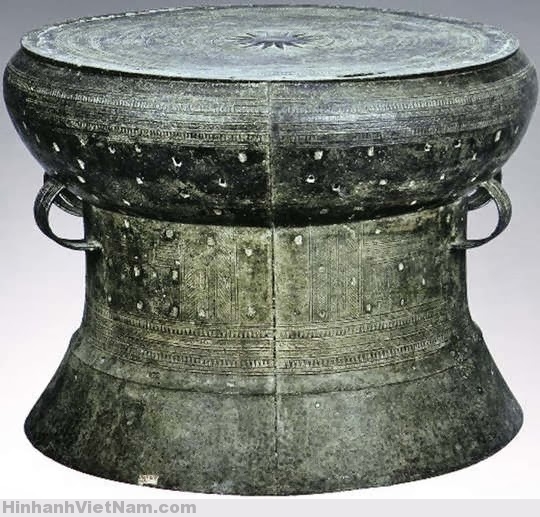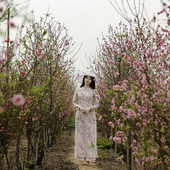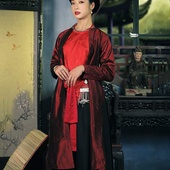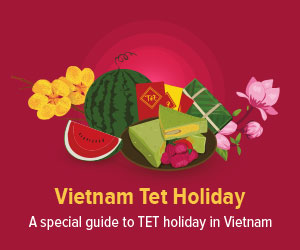A Brief History of Vietnam Fine Arts
Vietnam Fine Art is one of the oldest art traditions in Asia, dating back to the Stone Age around 8,000 BCE. While it has incorporated influences from China and other regional cultures, and later from French colonialism in the 19th century, Vietnamese Fine Art has developed a distinctive character with unique features.
Neolithic Art
Evidence from various relics demonstrates that Vietnamese Fine Art began to emerge as early as the Stone Age, with significant developments during the Neolithic era characterized by basic artworks made from clay and simple decorative elements.
Bronze Age Art
 Dong Son Bronze Drum: A Heritage of Vietnam
Dong Son Bronze Drum: A Heritage of Vietnam
In the Bronze Age (1,000 BC to the 4th century BC), Vietnamese Fine Art flourished, particularly evident in the renowned Dong Son Culture of Northern Vietnam. This culture is globally recognized for its exceptional bronze-casting techniques that produced the famous Dong Son drums, which feature geometric patterns and vivid depictions of daily life. Notably, the imagery on these drums illustrates people adorned in intricately woven fabrics.
Domination from 111 BC to 939 AD
During the rule of the Han, Liang, and Tang Dynasties from the north, Vietnamese Fine Art assimilated several new techniques in ceramics and pottery while simultaneously continuing to evolve through native practices, evident in excavated tombs across Northern Vietnam.
From Ngô to Trần Dynasty
The prolonged influence of Chinese Fine Art, along with philosophies such as Confucianism, Mahayana Buddhism, and Taoism, shaped the artworks of the Vietnamese during this period. However, Vietnamese Fine Art carved a path of independence during this golden era, particularly in the art of ceramics. During the Lý period, Vietnamese ceramics achieved international acclaim across East and Southeast Asia. This era also saw the creation of historic architectural masterpieces that still stand today, such as the Temple of Literature, One Pillar Pagoda, and Quynh Lam Pagoda.
Fourth Ming Domination and Lê Dynasty
Although the Ming Dynasty's rule in Vietnam lasted only 20 years, it was a challenging time for the development of Vietnamese Fine Art, as many masterpieces and documents were destroyed, resulting in extensive loss of historical records. Following the successful revolt against the Ming, the Lê Dynasty emerged, now facing significant artistic influence from the Ming Dynasty of China.
Nguyễn Dynasty
During the Nguyễn Dynasty, there was a resurgence of interest in ceramics and porcelain, with Vietnamese ceramics receiving high acclaim and being distributed to esteemed imperial courts throughout Asia. This period marked a significant appreciation for Vietnamese craftsmanship.
Calligraphy
Calligraphy has a long-standing tradition in Vietnamese Fine Art, originally employing Chinese and Nôm scripts. In contemporary times, many modern calligraphers favor the use of Vietnamese scripts in their works. Calligraphy remains a cherished cultural aspect among the Vietnamese during Tet holidays, symbolizing luck and prosperity.
Modern Art
Beginning in the 19th century, Western artistic influences emerged with the arrival of French colonists in Vietnam. This period allowed some affluent artists to pursue studies in France, returning to incorporate French artistic techniques into their work. This blending led to unique combinations with traditional mediums such as silk and lacquer.
Visual Art
Vietnamese visual art is especially renowned for its silk paintings and woodblock prints. Among these, silk painting is particularly beloved and has been significantly influenced by French coloring techniques from the 19th and 20th centuries. This art form is highly prized in both Chinese and Japanese markets, reflecting the cross-cultural appreciation of Vietnamese artistic endeavors.

11 Horoscopes In The Year Of The Dragon
The dragon year can be a booster-for-all for all other zodiacs.

Vietnam's 5 Most Important Festivals & Travel Tips
Vietnam's cultural richness stands out with a variety of traditional festivals.

Kinh People
Vietnam is known for its cultural diversity with 54 ethnic groups, in which, Kinh or Viet people accounts for nearly 90% of the whole population.






